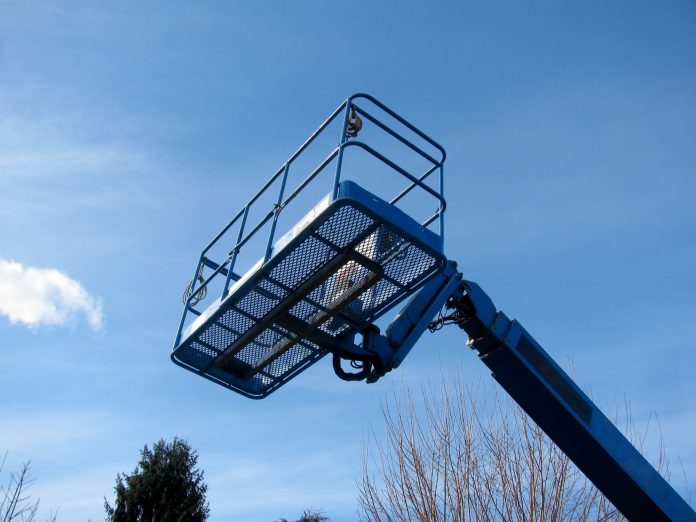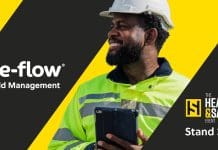Operating safely when working at height is a dangerous occupation, but with good management and training, working on mobile elevating work platforms (MEWPs) can be safe says Berlinda Nadarajan of IPAF.
Work at height is by nature a dangerous thing. Falls from height are the largest cause of fatal accidents at work both in the UK and worldwide. In the reporting year 2012/2013, there were 46 (31%) fatal falls in the work place in the UK, according to statistics from the Health & Safety Executive (HSE). Falls accounted for 23 or 50% of fatal injuries in construction. But work at height need not be dangerous or deadly. Most falls occur when people use inappropriate equipment or methods to work at height.
Mobile elevating work platforms (MEWPs) are acknowledged as one of the safest means of performing temporary work at height, for example, in various HSE guidance such as “Health and safety in roof work” (HSG33), “Fragile roofs: Safe working practices” (GEIS5), and “Joint problem solving – working at height up to 4.5m” (worker engagement case study 13).
In the case study research commissioned by Crown House Technologies (CHt), part of the Laing O’Rourke Group in the UK, they found MEWPs to be safer and more effective compared with other methods for work at height, even for low-level access. The findings were the result of a complete review of the work at height procedures (up to 4.5 metres) for mechanical and electrical installation carried out by Crown House Technologies in 2008.
Falls from height are the primary cause of serious injury in the construction industry. CHt’s detailed review found that just under a fifth of all accidents on site are related to access equipment. A small proportion of these are caused by MEWPs (19%), compared with podiums, mobile towers, ladders and A-frames.
CHt also undertook a series of time and motion studies using different types of access equipment on 2 different projects. The aim was to understand how long typical tasks took with the variety of equipment that had been used in the past. The results showed that working with small MEWPs was significantly safer than using either podiums or mobile aluminium scaffold towers. Furthermore, MEWPs were found to be 3 times more efficient to use than mobile towers and podiums during these tests.
The IPAF European Powered Access Rental Market Report 2014 (www.ipaf.org/reports) reveals that there are 51,726 MEWPs in the UK rental fleet, with average utilisation estimated at 65%. This figure means that there are 33,622 MEWPs on hire every working day, with 50 weeks per year and a 5-day week, and approximately 8.4 million days of MEWP use annually in the UK.
The vast majority of people using MEWPs have a good experience and work safely at height – completing high-risk tasks, working from a MEWP, safely and efficiently. The HSE believes, as explained by inspectors Joy Jones and Justine Lee in various industry talks, that MEWPs provide a safe and efficient solution to many work at height tasks, but that MEWPs do also introduce other hazards that need to be managed through the risk assessment process.
IPAF’s accident reporting project (www.ipaf.org/accident) shows that fatal accidents involving MEWPs are a rare occurrence, but when an incident does occur, there are some common causes that can be traced back to the key duty holders: ranging from planners, managers and supervisors, to operators and ground/rescue personnel.
What can site managers do to minimise risk? The most important thing is to review management and operator training procedures, and to ensure that safety systems are in place. Do a job-specific risk assessment before starting work. Identify hazards, minimise or eliminate the risks and select the right equipment for the job. Have in place a policy for access equipment use and training.
Ensure that users of boom-type platforms wear a full body harness with a short restraint lanyard attached to a suitable anchor point. This saves them from being catapulted out of the platform in the event of the unexpected. Operators who use any machine that differs significantly to that on which they were trained should receive a familiarisation to cover the differences. Ensure that all access equipment used to lift people is thoroughly examined by a competent person every six months.
These are just some points to help managers work safer, and all feature in IPAF’s MEWPs for Managers course, produced together with the HSE. The 1 day course provides candidates with the basic information every manager should know about planning, selecting and preparing for the use of MEWPs on site, from paperwork to logistics. This includes regulations, recognition and avoidance of hazards, risk assessment, and looking at the various types of MEWPs available and what they are best suited for. Details are at www.ipaf.org/m4m
Work at height is high risk, but that risk is manageable, and MEWPs provide a safe and efficient option millions of times every year. But safe operation needs good management, planning and risk assessment, and properly trained and familiarised operators and rescue personnel. Safety and training resources to assist managers and operators are available at www.ipaf.org ■
. . . . . . . . . . . . . . . . . . . . . . . . . . . . . . . . . . . . . . . . . . . . . . .
Berlinda Nadarajan
Information Officer
International Powered Access Federation (IPAF)
Tel: +44 (0)15395 66700














